|
This year, the European meeting for the International Society of Microbial Electrochemistry and Technology (EU-ISMET) took place in Rome, Italy. For this meeting, scientists and researchers from the European continent gathered to discuss current topics and resent discoveries concerning many topics in the field of microbial electrochemistry. As scientists, we love to develop acronyms to describe everything is it that we do. Here is a little glimpse into just some of the acronyms we know and love:
I am going to highlight some of the research from EU-ISMET 2016 and then delve into a discussion about how I think the field can progress, but first I want to show you some of the sights around Rome, Italy. Coincidentally, the conference coincided with World Tourism Day, which took place on September 27! For world tourism day, certain participating tourist spots around the world are free for admission. Before coming to Rome, I had no idea that such a thing exists! While in Rome, not only did I discover its existence, but I also discovered that it would allow me to travel to Vatican City free of charge. Concerned that all of the tickets may already have been dispensed, I checked online and was delighted to see that there were still tickets left. The morning of the 27th; I booked my free trip to the Vatican. The afternoon of the 27th; I took my free tour of the Vatican. The evening of the 27th; I was back at the conference soon enough to enjoy the banquet dinner which included all the wine we could drink!
Vatican City is a sovereign state (country) within the city of Rome which serves as the primary residence for the Pope, whom lives in the Apostolic Palace. The Pope is the Bishop of Rome and thus is the head of the clergy for the Roman Catholic Church. Since this site houses the head of the Roman Catholic Church, it holds great religious significance for those of the Catholic faith. It is from this site that the Pope celebrates mass and recites Angelus from the Bible on the Lord's Day- which is Sunday for Roman Catholics. Vatican City includes such attractions as Michelangelo’s Sistine Chapel, St. Peter's Basilica with Michelangelo's dome, St. Peter's Square, and the Vatican obelisk. Pictures inside the Vatican museum are at the end of the post.
Rome, or Roma, is the capitol city of Italy and contains over four million residents. Since Rome is the capitol of Italy and also houses Vatican City, it is often defined as the capitol of two states. The city of Rome was the capitol of the Roman Empire and has contained occupants for nearly three millennia- with many considering it one of the birthplaces of western civilization and perhaps even the first metropolis.
The Pantheon is an ancient church that was built nearly two thousand years ago:
Altare della Patria was built to honor the first king of a unified Italy- Victor Emmanuel (1849-1861):
The Colosseum is the largest amphitheater ever built (AD 72-80). Made of concrete and sand, this amphitheater could accommodate 50,000-80,000 people and was used for gladiatorial contests and public spectacles including mock sea battles, animal hunts, executions, re-enactments of famous battles, and dramas based on Classical mythology:
The Roman Forum, or what is left of it, housed several important Roman buildings and served as a political, social, and economic center for ancient Rome:
The Sapienza University of Rome, founded in 1303, is one of the world’s most ancient universities. Admission at the university totals over 113,000 students- law and architecture having the highest number of admitted students. The university also contains the Museo Di Arte Classica which houses several hundred reconstructed classical sculptures for students to study. Think of it as a library of art, but rather than studying sculptures from a book, students can study them in reconstructed form and observe them in three dimensional space. See my blog from the Louvre in France to compare the Winged Victory of Samothrace to the faux Winged Victory of Samothrace.
As with all conferences, there are too many researchers to highlight every one. For a complete list of abstracts, please download the pamphlet.
Lars Angenent (Cornell University, USA - University of Tübingen, Germany, ISMET President)
“THE SOIL BIOSNORKEL: MICROBIAL EXTRACELLULAR ELECTRON TRANSFER MECHANISMS OF BIOCHAR.” Gave link to assemble an MFC designed by the Bond lab.
Simone Schmitz, M. A. Rosenbaum (RWTH Aachen University, Germany)
“DEFINED CO-CULTURES OF PSEUDOMONAS AERUGINOSA PA14 AND ENTEROBACTER AEROGENES FOR ENHANCED CURRENT GENERATION IN BIOELECTROCHEMICAL SYSTEMS”
Christin Koch, F. Harnisch (winner of best presentation and best paper) (Helmholtz Centre for
Environmental Research - UFZ, Germany) “LA TAVOLOZZA ELETTRICA - THE DIVERSITY OF ELECTROACTIVE MICROORGANISMS”
Ricardo O. Louro (ITQB, Lisbon, Portugal)
“DIALOGO SOPRA I DUE MASSIMI SISTEMI DEL MONDO” ROLE AND MECHANISM OF FLAVIN-CYTOCHROME INTERACTIONS IN EXTRACELLULAR ELECTRON TRANSFER”
A. Berná A., D. Casillas, E. Sebastian, C. Aragon, K. Fahd, J.R. Pidre, J.J. Salas, C. Manchón, A. Prado, A. Aguirre, R. Esteve, B. Barroeta, J. Fernández, J. Mancebo, Abraham Esteve-Nuñez (Universidad de Grenada, Alcala, Spain)
“SMARTWETLAND: CONTROLLING AND OPTIMIZING THE PERFORMANCE OF A FULL SCALE BIOELECTROCHEMICAL-ASSISTED WETLAND”
P. Zamora, I. Salcedo, Philipp Kuntke, A. Jeremiasse (Wetsus, Netherlands)
“UP-SCALING OF BIOELECTROCHEMICAL SYSTEMS FOR NITROGEN RECOVERY”
Albert Guisasola, A. Martínez-Miro, J. Guerrero, Y. Ruiz. J.A. Baeza (Universitat - Autònoma de Barcelona, Spain)
“START-UP AND SUCCESSFUL LONG-TERM OPERATION OF A PILOTSCALE MEC FOR H2 PRODUCTION FROM URBAN WASTEWATER”
Xu Zhang, J. Philips, H. Roume, K. Guo, K. Rabaey, A. Prévoteau (Gent, Belgium)
“ULTRA-FAST MONITORING OF ELECTRON TRANSFER ABILITY ACROSS ANODIC BIOFILM”
Miyuki Thirumurthy, A. K Jones (Arizona State University, USA)
“ASSEMBLY OF REDOX PROTEINS INTO SUPRAMOLECULAR NANOWIRES”
Sebastià Puig (gave a presentation in Netherlands) (Universitat de Girona, Spain)
“BIOREMEDIATION OF CONTAMINATED WATER: A NICHE FOR MICROBIAL ELECTROCHEMICAL TECHNOLOGIES”
Agnese Lai, R. Verdini, M. Simone, F. Aulenta, M. Majone (Sapienza University of Rome, Italy)
“A NOVEL BIOELECTROCHEMICAL APPROACH FOR CHLORINATED ALIPHATIC HYDROCARBONS REDUCTIVE AND OXIDATIVE DECHLORINATION”
Sara Tejedor-Sanz, P. Fernandez, P. Letón, C. Torres, A. Esteve-Nuñez (Alcala, Spain)
“FLUIDIZED ANODES VERSUS NON-CONDUCTIVE FLUIDIZED BEDS IN THE TREATMENT OF A BREWERY WASTEWATER”
Deepak Pant (Senior Scientist at VITO, Flemish Institute for Technological Research, Belgium)
“MICROBIAL ELECTROCHEMICAL REACTORS AND MATERIALS”
Antonin Prévoteau, C. Cagnetta, K. Rabaey (Gent, Belgium)
“RAPID AND ACCURATE ASSAY FOR BIOLOGICAL OXYGEN DEMAND VIA HYDRODYNAMIC CHRONOAMPEROMETRY”
Babu Halan, L.F. Morgado Rosa,F. Harnisch, K. Buehler, A. Schmid (Helmholtz Centre for Environmental Research, Germany)
“LIGHT DEPENDENT EXOELECTROGENIC ACTIVITY OF SYNECHOCYSTIS SP. PCC 6803 AND PRODUCTION OF SUSTAINABLE ELECTRICITY IN A BIO-PHOTOVOLTAIC SYSTEM”
Ni, G., Sleutels, T.H.J.A., Heijne, A.T., Dopson, M. (EEMis, Sweden and Wetsus, Netherlands)
"Resource Recovery with Extremophilic Microbial Electrochemical Systems"
I also presented “PH SHIFTS IN THE ANODE POTENTIAL RESPONSE FROM THERMINCOLA FERRIACETICA SUGGEST RATE LIMITING PROTON COUPLED ELECTRON TRANSFER PROTEIN.”
Take a break with a trip to an authentic Roman coffee shop!
"Commercialization within the field of academia is intentionally and systematically difficult"
The closing session of the EU-ISMET conference was a roundtable discussion about the state of the field titled “Future technological and scientific challenges of METs”. The session, chaired by Korneel Rabaey, asked the people on the panel (Bruce Logan, Annemiek ter Heijne, Sebastia Puig, Ian Head, and Abraham Esteve Núñez) their opinion about several issues within the field. Abraham Esteve Núñez seemed optimistic given some recent financial investments he had received from local industry in Spain. Bruce Logan expressed excitement at the prospect of using microbial electrochemical cells at forward operating bases to treat wastewater in warzones (via SERDP) and using microbial electrochemistry to developrobust and low cost toilets for impoverished communities around the world. Ian Head was very intrigued by the research going on in the Bristol Robotics lab that was using Eco-bots to convert urine and flies into power to operate robots. This was all fantastic to hear. As someone who has spent the better half of the last decade dedicating efforts to research in the field of microbial electrochemistry, it was uplifting to hear the people at the forefront of the field showing optimism about the technology. However, I could not help but think about theunsolicited discussion that had happened in Wageningen only a few weeks prior. Why is it that, despite all of this optimism and investment, all the publications and grants, all of the time and effort, our field still has not managed to develop a feasible technology at scale?
The field of research into microbial electrochemical cells (MxC) has been around, in its current form, for roughly ten years now. When I explain the technology to people, the response I get is usually the same, “Wow! That’s the future! When is this going to be commercialized?” To which the answer is invariably somewhere between 2-5 years. Yes, for the last decade, MXC technology has been in a state of imminent commercialization; for the last 10 years, commercial MXCs have only been a few years away. Watching this discussion at EU-ISMET, I could not help but feel that the room was aware of this fact- and yet no one was willing to ‘get real’ about the issue. Speaking with various researchers during the conference, I definitely gathered the sense that people are aware of, and a bit frustrated by this situation.
So what are the major pitfalls of using academia to conduct ‘use inspired research’ for the sake of commercializing industrial scale technologies and how do we solve them?
Commercialization within the field of academia is intentionally and systematically difficult:
Traditionally, the primary motivating factor within academia has been the push to publish new information in research journals so that the research lab and institution at which the lab resides can achieve greater scientific impact and esteem. Researchers are motivated by this drive because their primary funding sources are through research grants that are often rewarded to labs based on merit and impact. In other words- labs which publish more data and hold more patents have higher impact and thus are more likely to get future funding to publish more data. This positive feedback loop, although beneficial in that it encourages scientists to publish meaningful results, has very dire systematic flaws.
"It should never be the case that a scientist is discouraged from disseminating his or her data due to fear of the consequences resulting from a systematically flawed research climate."
Flaw number one: it often discourages scientists from disseminating information to other labs. When any scientist, from undergraduate researcher, to graduate student, to post doc, all the way up to senior professor, hears about another lab working on a similar project, the natural inclination is often to publish as quickly as possible in fear that the other lab may publish similar information first. If a scientist is working on a research project and discovers a fascinating new phenomenon- the impact of publishing information about that phenomenon will be greatly diminished if someone else publishes similar information first. We call this situation being ‘scooped.’ In science, for the most part, the first lab to publish about a discovery gets to talk about that discovery in journals which have higher impact. In other words, the first lab to talk about a discovery is going to get the most credit and thus have a greater opportunity to receive funding in the future. When we are taught about the scientific method in school, we are told that science must necessarily be confirmed by future research to verify and validate. However, in practice, this is not always the case. If a scientist attempts to publish a research paper that ‘verifies’ another research paper, he or she will almost always be forced to publish in a very low impact journal (ones that are read by only few), or worse, they may not be able to publish at all.
In order to graduate and mature as a scientist/ develop a career, it is essential to publish and to publish at the highest impact possible. In order to procure funding to continue developing technology and conducting research in your field, it is essential to publish and to publish at the highest impact possible. Without publication, scientists do not graduate and labs do not receive funding- this is what we mean with the term ‘publish or perish.’ Given this reality, many are skeptical about sharing data; some going as far as to not tell others about their results entirely until they are published.
"...citizens not affiliated with large research institutions or companies that pay enormous subscription fees cannot access the data that they paid for!"
Flaw number two: the publication process is very time intensive and expensive. For a research paper to be published, it must contain a complete story and undergo intense scrutiny and vetting by other experts in the field. This system has its benefits- it prevents information that may otherwise be unreliable or misleading from misinforming other scientists. However, this system is also fundamentally flawed in terms of commercializing technology. For example, in order to publish you must tell a complete story with a succinct ‘take home message.’ Graph 1 must lead to graph 2, to chart 3, etc… until a solid conclusion can be drawn. In theory, this sounds full-proof, but in practice it does not always make sense. For example, my publication about the “Effect of pH and buffer concentration on anode biofilms of Thermincola ferriacetica” (including supporting information) contains eleven graphs, nine images, and four tables, that all present different data which when combined together reach a single conclusion. However, each graph tells a story in-and-of itself. If another research lab were interested in say, the pH range of T. ferriacetica, they would not be able to find that information until after I had gathered all of the data from my other experiments, composed everything into an article, drew a conclusion, and then had that conclusion vetted within the context of everything currently published in the field. To publish this paper, I had to construct and operate greater than 20 reactors (that worked) over three years. Unless I am willing to freely discuss my findings prior to publication, a researcher working to commercialize a thermophilic MxC may have to wait several years to perfect a reactor design based on data that was ‘waiting to be published.’ If I do choose to share my data, I run the risk of someone else publishing that data first and losing most of the credit, funding, and potentially my opportunity to graduate.
Flaw number three: research institutions are becoming more driven by the concept of patenting intellectual property (IP). If a scientist develops or discovers an essential break-through that will trouble-shoot a major issue in commercializing a research project, they are often discouraged from disseminating this information until their research institution has the opportunity to patent the idea and own the IP. Even more confounding is that often the funding used to conduct the research is granted by governmental institutions that allocate funds from a pool of money that is acquired from tax payers! For example, my research in the USA was funded by the Office of Naval Research, which is funded by the US Navy, which is a branch of the military that receives part of its funding from national taxes. Yet, when I published my data in the ‘high impact’ journal Bioelectrochemistry, I was informed that it would not be ‘open access.’ What this means is that citizens not affiliated with large research institutions or companies that pay enormous subscription fees cannot access the data that they paid for!
"It may seem impossible to insist that we change the entire academic system for the sake of commercializing the technologies of the future; so did finding bacteria that breathe metal and nuclear waste to develop the very technologies we seek to commercialize."
Taken these three flaws together, it is clear how academia is a systematically flawed and difficult avenue through which to commercialize experimental technologies like MxCs. The system in which research scientists operate is a system that is in the business of publishing information before others do so that they can perpetuate themselves by acquiring future funding and IP. As research scientists- our jobs depend on the idea that we publish something first and maximize our impact so that we can continue to conduct research in our labs and so that we can graduate to acquire higher academic status or positions in companies- not so that we can commercialize engineering innovations like MxCs. This is why, during the discussion, I uttered, “we [in academia] are not in the business of commercializing MxCs; we are in the business of publishing.” This is our primary dilemma.
"If we want to shift the paradigm of academia from one of basic research to one of use inspired research, we ought also to shift the paradigm through which we assess impact, disseminate information, and obtain research grants."
If we want to commercialize MxCs, we can no longer be in the business of publishing. For research scientists to leave the business of publishing, we need to operate as a collective and see our role within the ISMET society as something more than one scientist working in one lab on one research project. We need to see ourselves as an essential piece of a cohesive unit that is working together every day to commercialize a technology. We need international perspective. We need to disseminate our information as if we were a commercial industry. We need a collective call to action. Our primary goal must be to commercialize together, not to publish and patent snippets of information apart.
As I have traveled the Earth, I have met very intelligent people making leading edge discoveries in research facilities all around the world. Many of these people are present at the ISMET meetings. If I were to ask any one of them if they think we have the collective knowledge and expertise necessary to commercialize our project, I think most would agree that indeed we do. Therefore, for the ISMET society to commercialize MxC technology we must openly and transparently share our information; we have to conduct our business within a social and political framework which encourages us to disseminate our information freely and immediately. It is not sustainable to remain in the business of merely publishing- we must put ourselves in the business of commercialization. It should never be the case that a scientist is discouraged from disseminating his or her data due to fear of the consequences resulting from a systematically flawed research climate. As scientists, we need to confront the academic world in which we reside and ask ourselves: do we continue to struggle for commercialization in spite of the system or do we innovate and alter our operational framework so that we strive for commercialization for the sake of the system? If we want to shift the paradigm of academia from one of basic research to one of use inspired research, we ought also to shift the paradigm through which we assess impact, disseminate information, and obtain research grants.
It may seem impossible to insist that we change the entire academic system for the sake of commercializing the technologies of the future; so did finding bacteria that breathe metal and nuclear waste to develop the very technologies we seek to commercialize.
I am very grateful to be in the field of microbial electrochemical technology. Through my travels so far, I have been delighted to experience so many bright individuals that are enthusiastic about their research, open to sharing information, and excited to have their research highlighted in an open forum. I am here, on this mission to science the Earth, not because I am alone in these ideals. Rather, we are here, on this mission to science the Earth, because we are together in them.
0 Comments
Leave a Reply. |
Science /ˈsīəns/
|

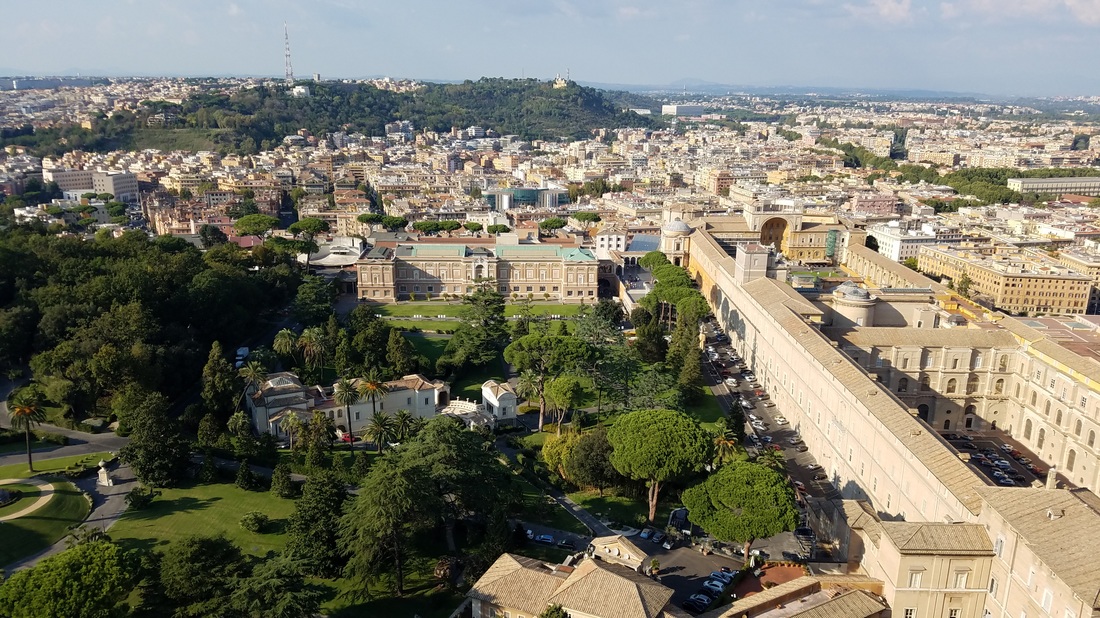
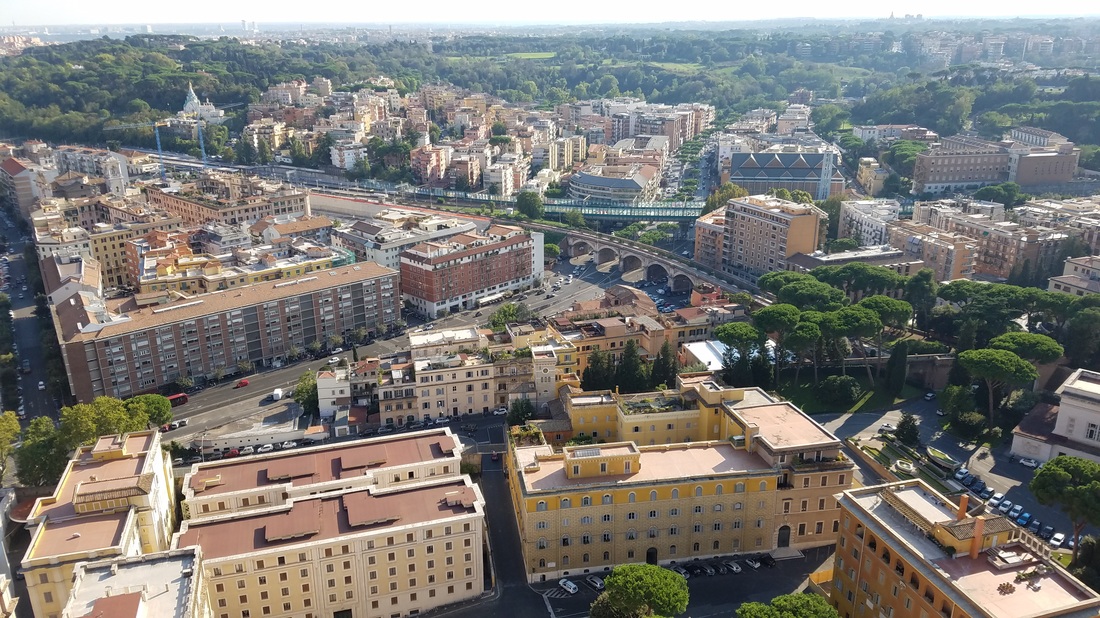
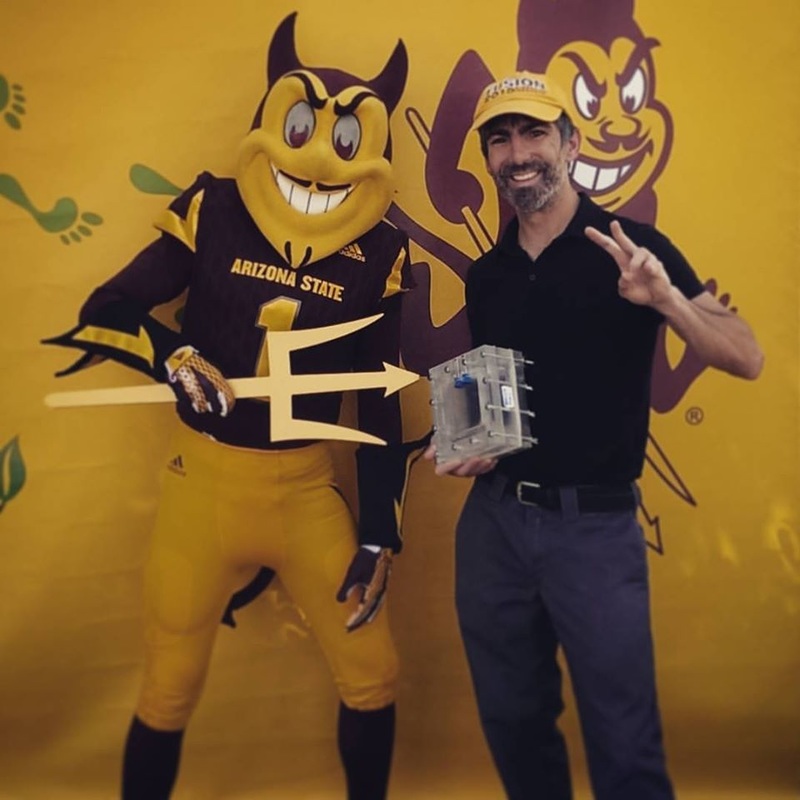

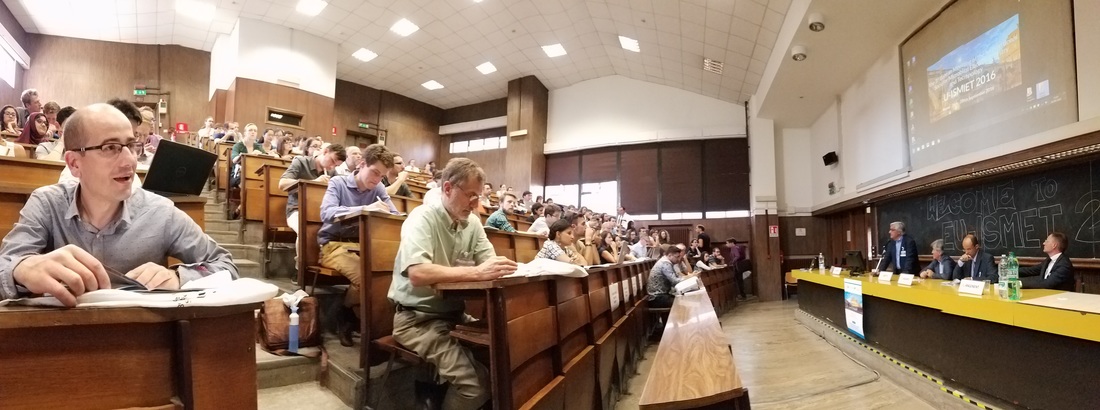
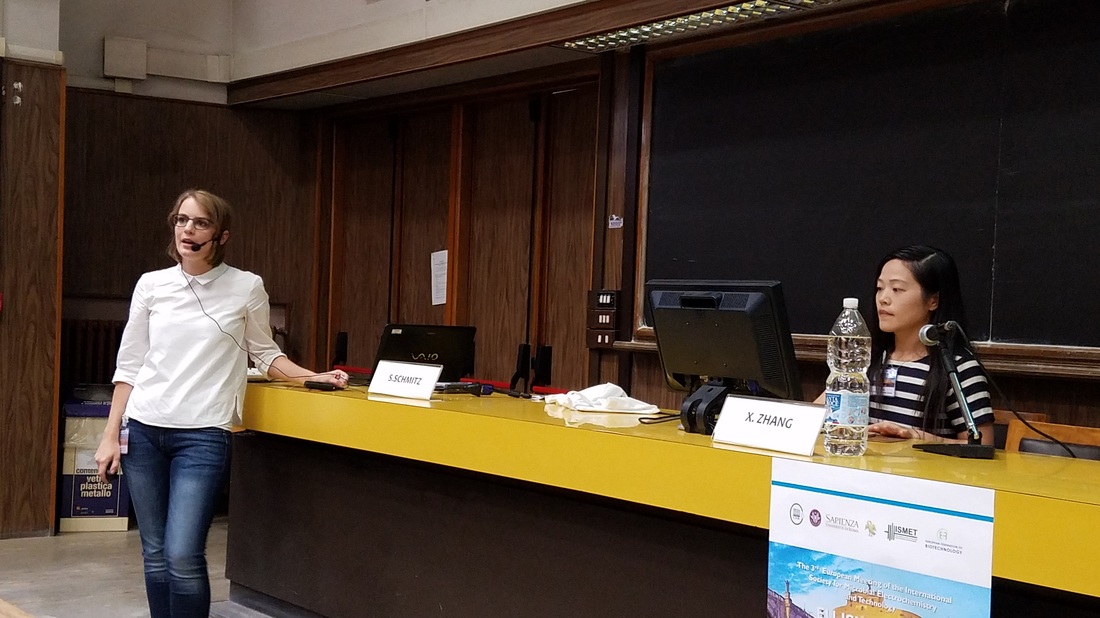
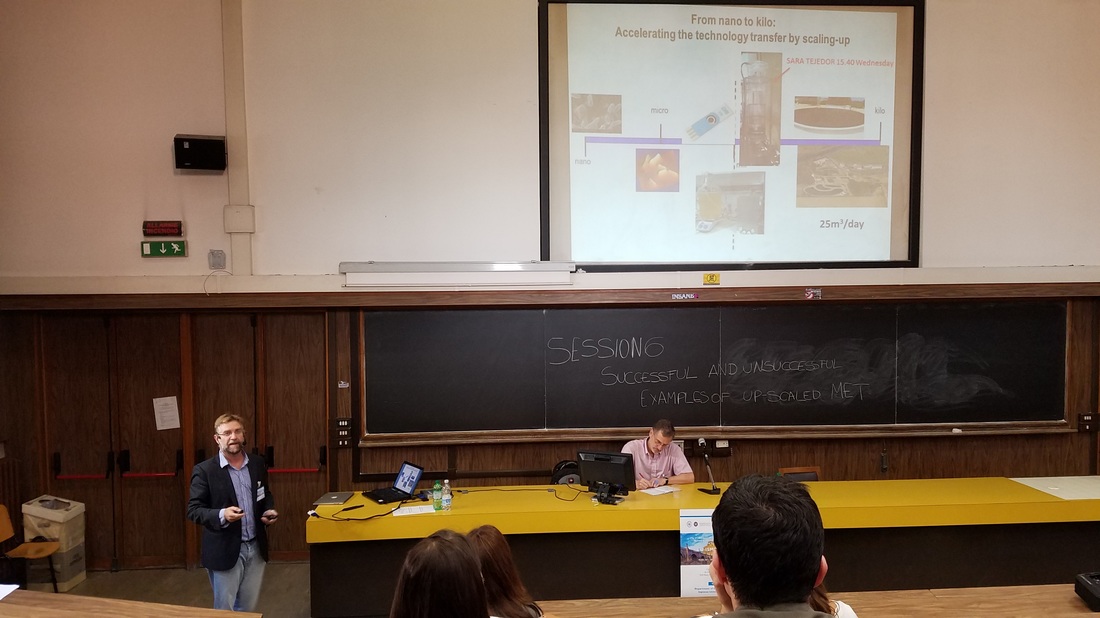
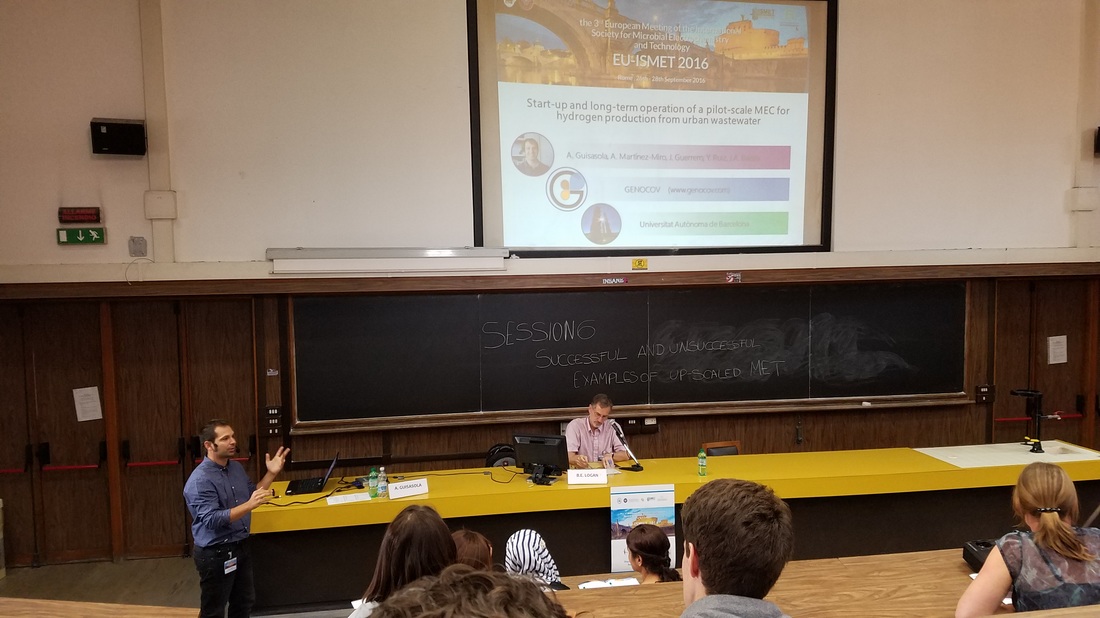
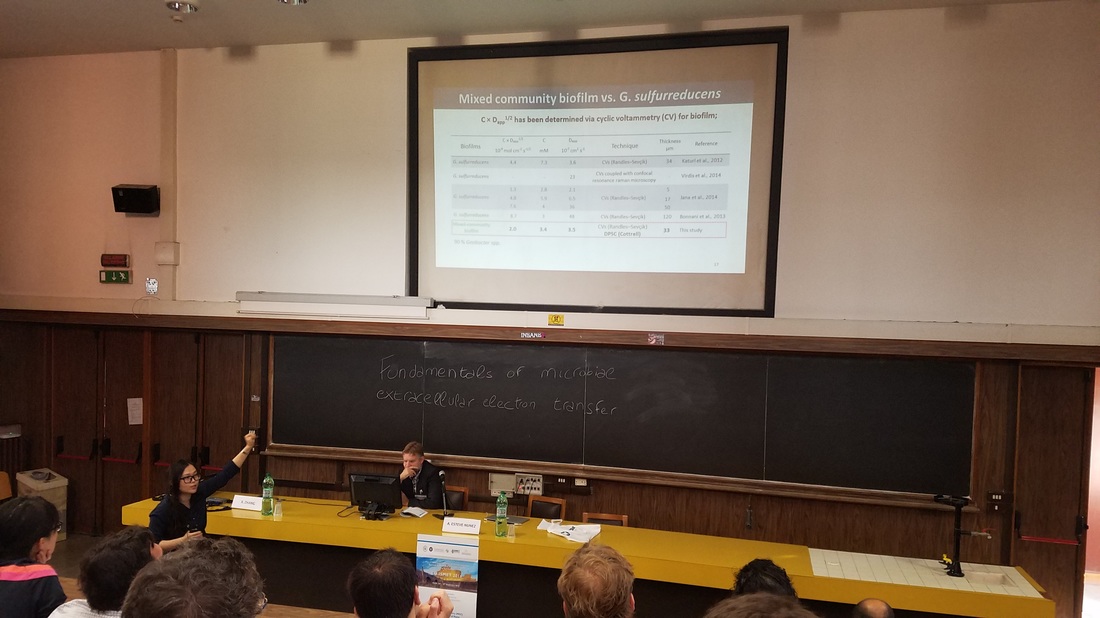
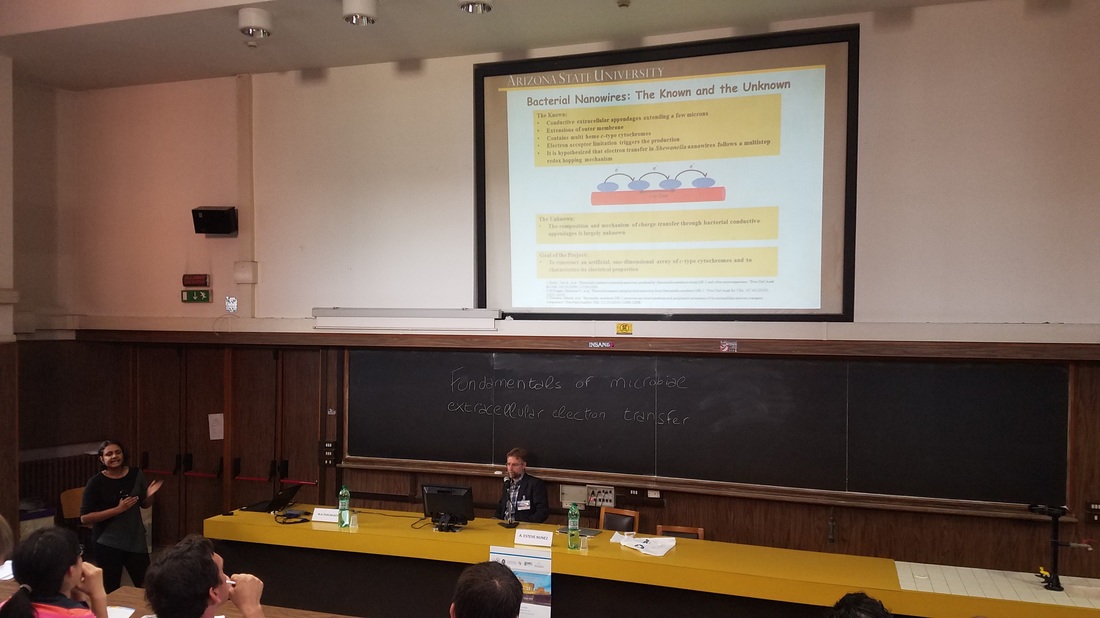
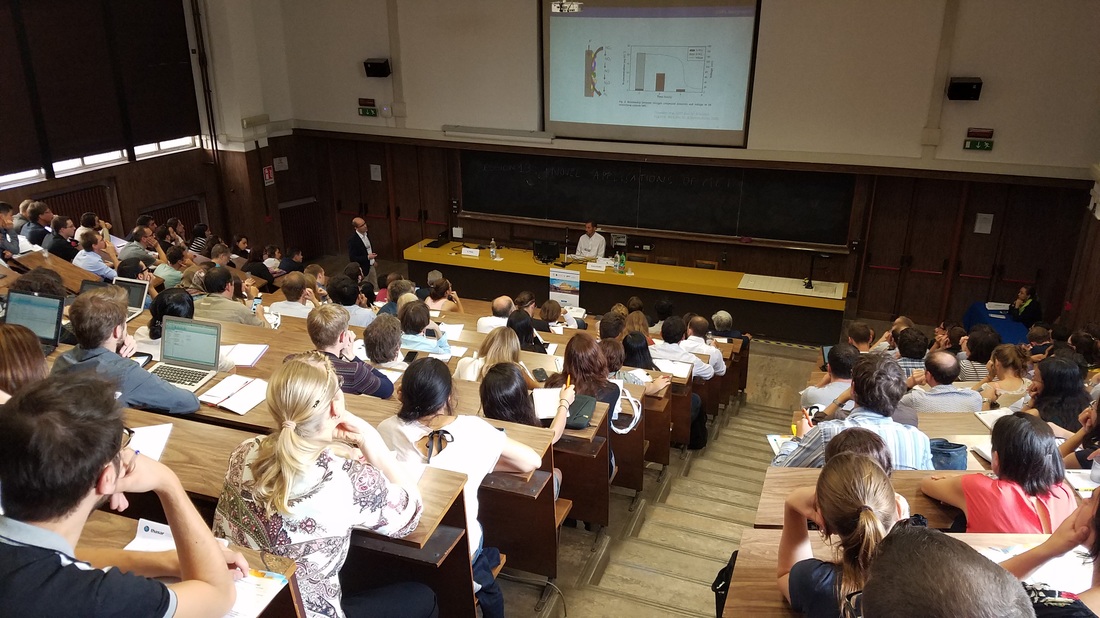
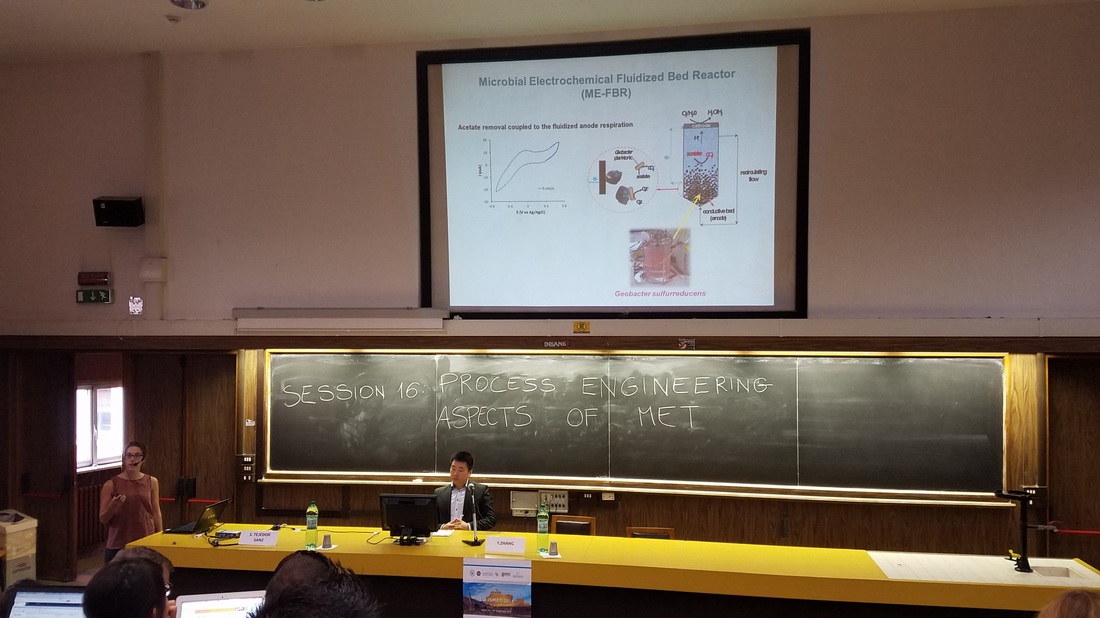
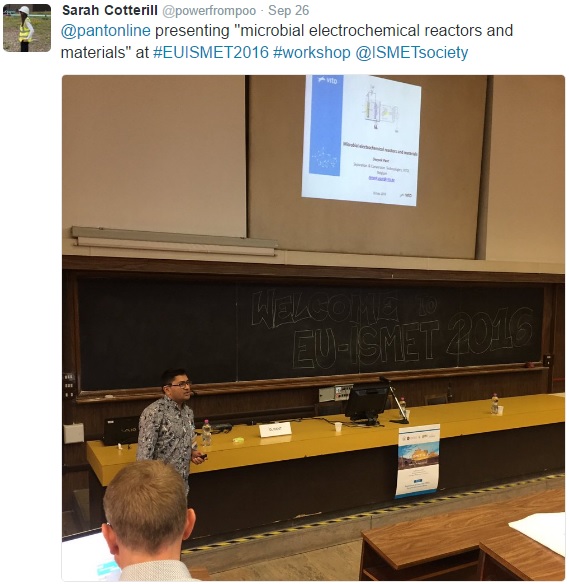
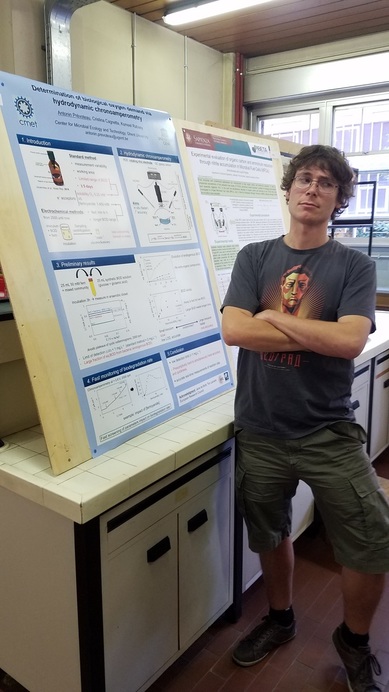
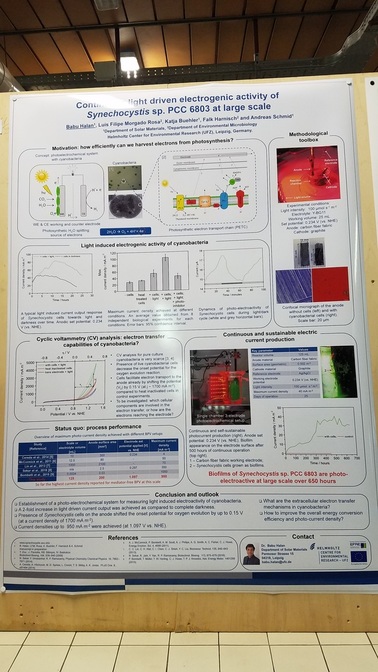
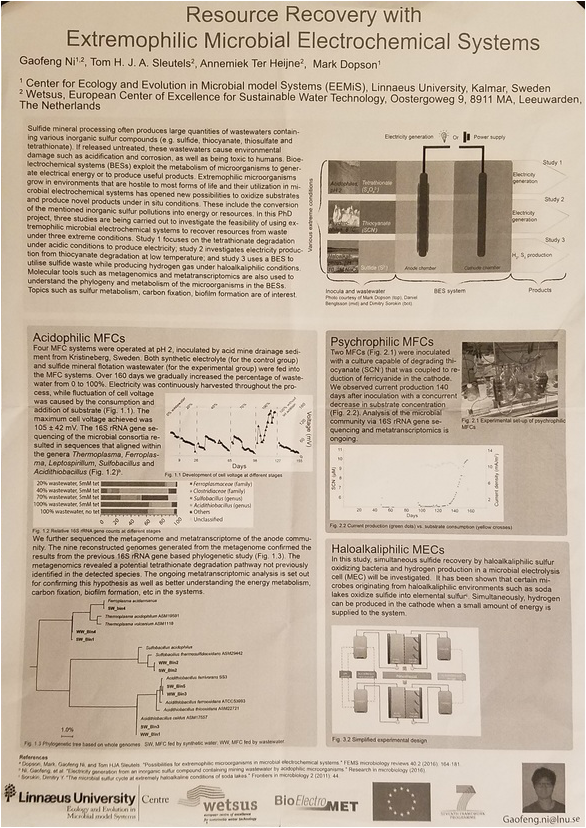
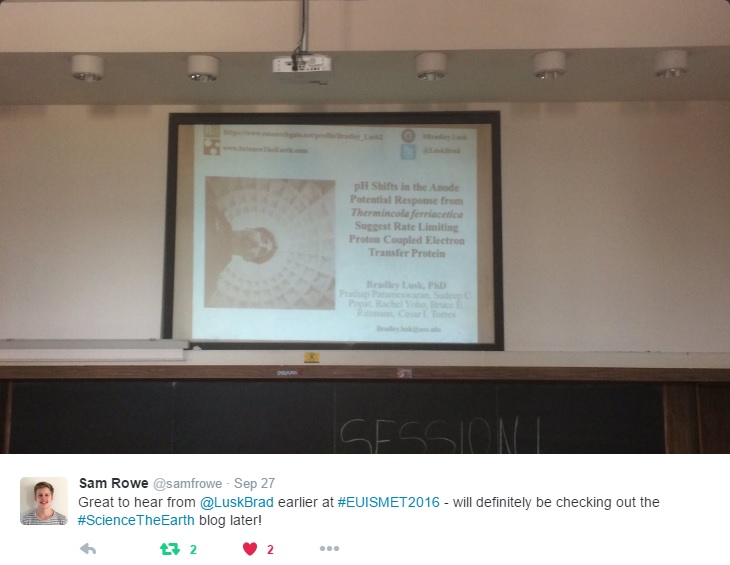

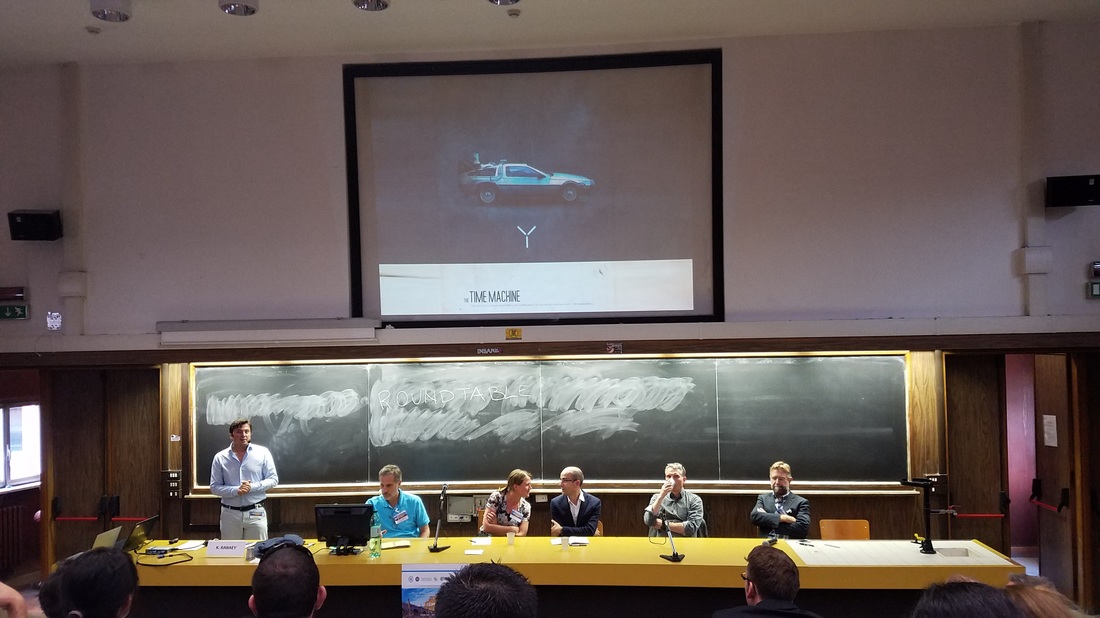
 RSS Feed
RSS Feed